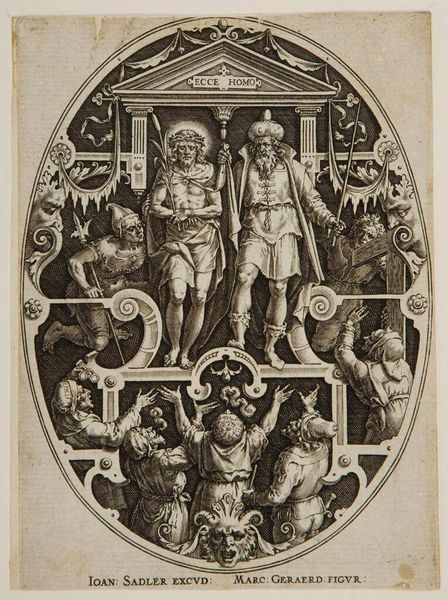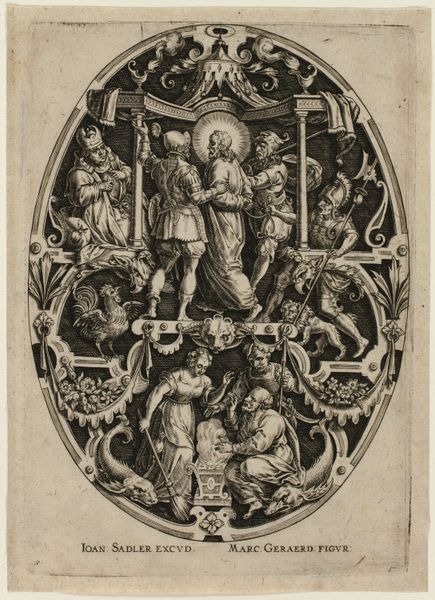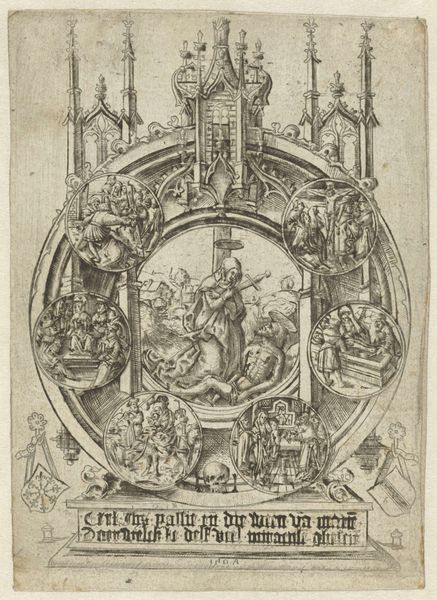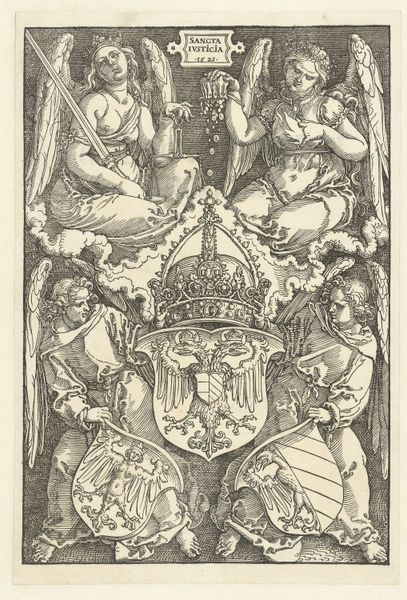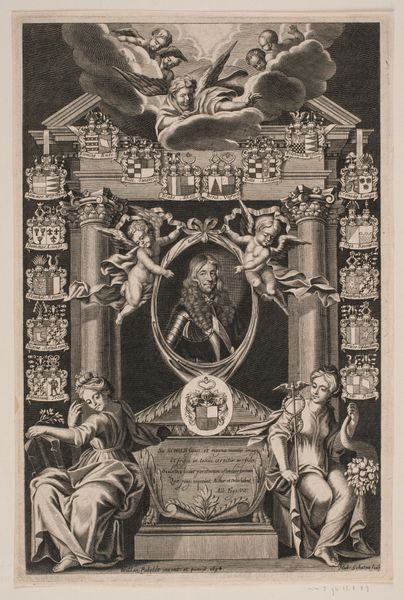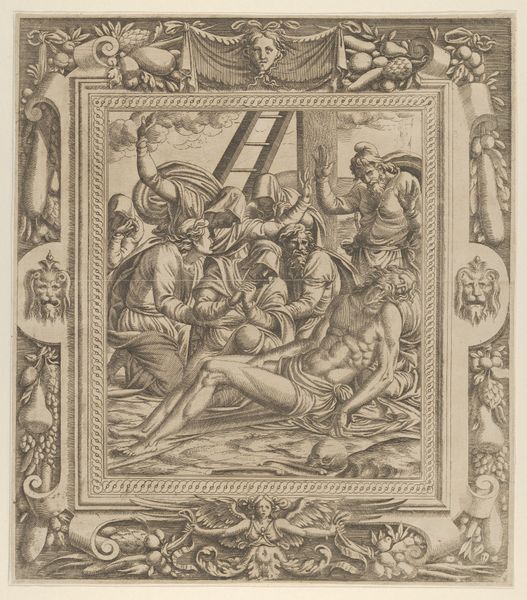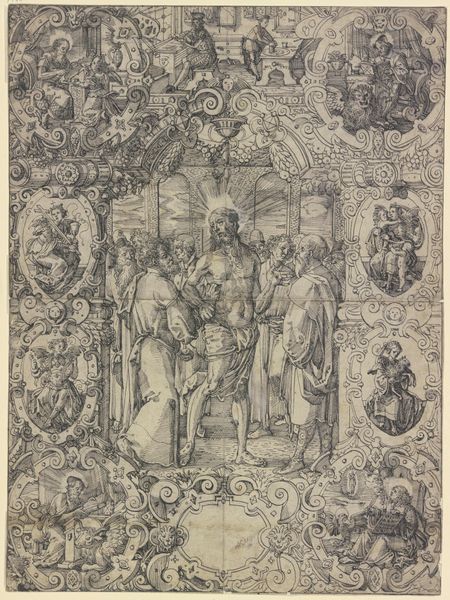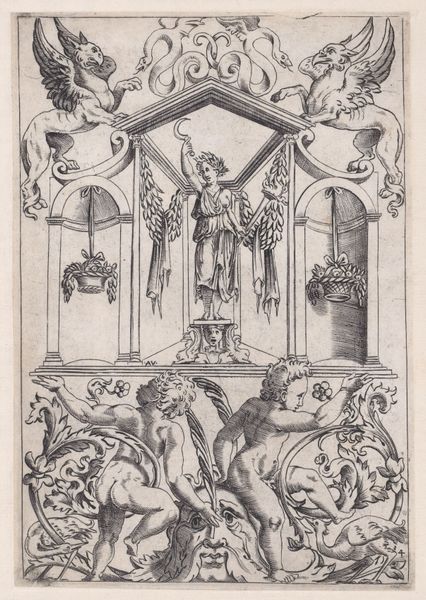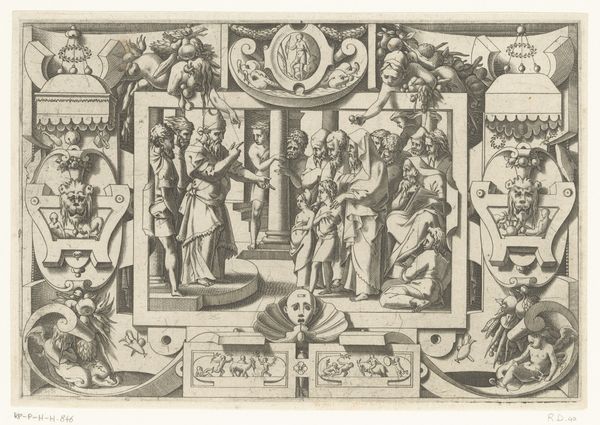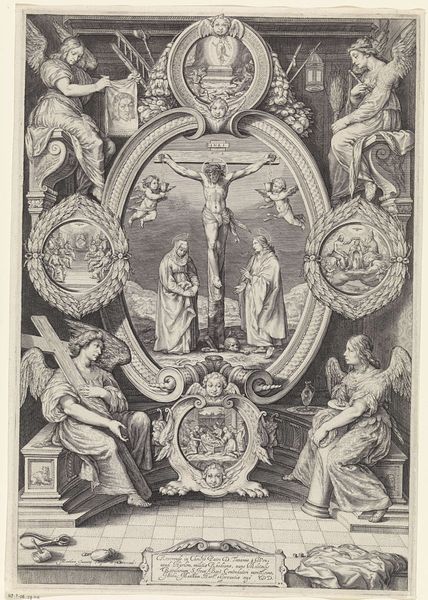
drawing, print, intaglio, paper, engraving
#
drawing
# print
#
intaglio
#
mannerism
#
figuration
#
paper
#
history-painting
#
northern-renaissance
#
engraving
Dimensions: 162 × 112 mm (plate); 175 × 125 mm (sheet)
Copyright: Public Domain
Editor: This intaglio print, “Ecce Homo, from Passion of Christ,” dates from somewhere between 1575 and 1600 and is by Jan Sadeler the Elder. It’s quite a scene! Christ and a turbaned man are central, framed by a rowdy crowd. What do you see in this piece? Curator: I see a concentrated representation of power dynamics and the manipulation of public sentiment. This piece reflects the politicization of religious imagery characteristic of the period. Note the theatrical staging – it places "Ecce Homo," the display of Christ to the masses, into a specific political arena. Editor: So, it's not just a biblical scene but a commentary on power? Curator: Precisely. Consider the “Northern Renaissance” style: It wasn't just about representing a historical event; it was also a way of engaging with contemporary debates about religious authority and the emerging role of the public. The image would circulate broadly. Who do you think this artwork may influence at that time and even now? Editor: Perhaps, at the time, to persuade or provoke thought regarding social standing during political instability, like between Catholics and Protestants. But also to engage us now to continue asking these complex social issues on what we choose to believe? Curator: That is it. The choice of figuration style further reinforces the Mannerist fascination with heightened emotion and dramatic presentation. "Ecce Homo" becomes a potent symbol for exploring the relationship between authority, public opinion, and suffering. It reflects anxieties about societal control. Editor: It is not only religious and artistic piece, it serves also as political tool. I’ll definitely look at art through that lens more often. Curator: Agreed. Paying attention to those factors really adds another layer to our appreciation of the piece.
Comments
No comments
Be the first to comment and join the conversation on the ultimate creative platform.
